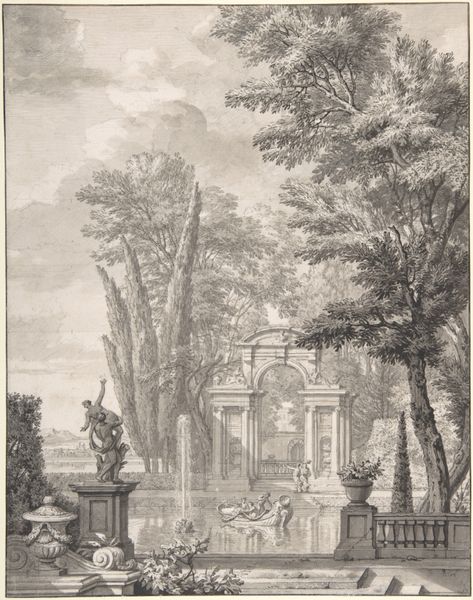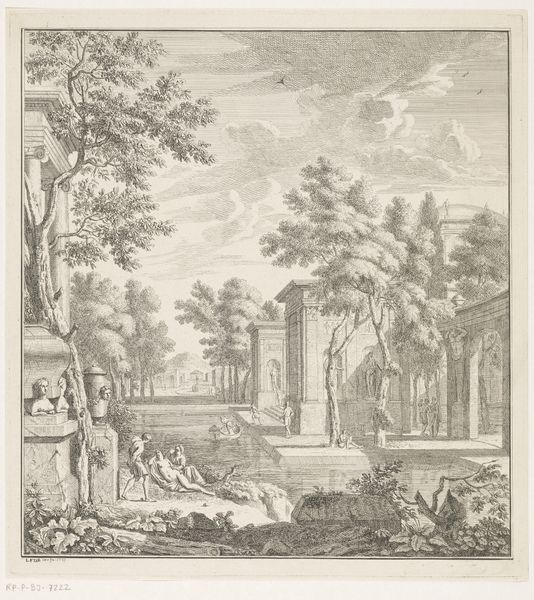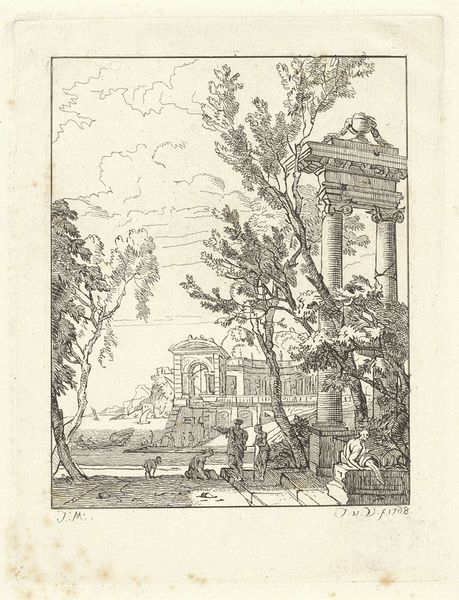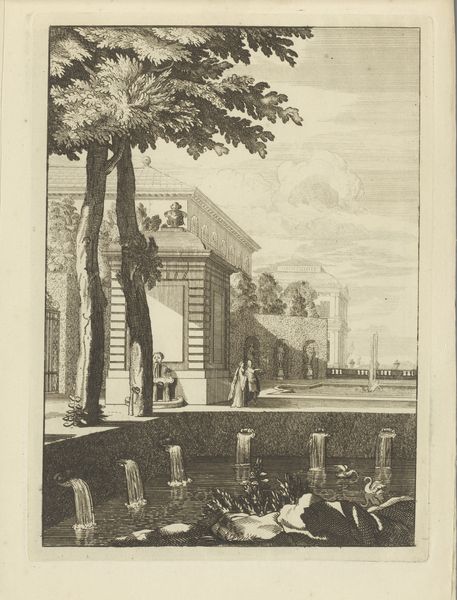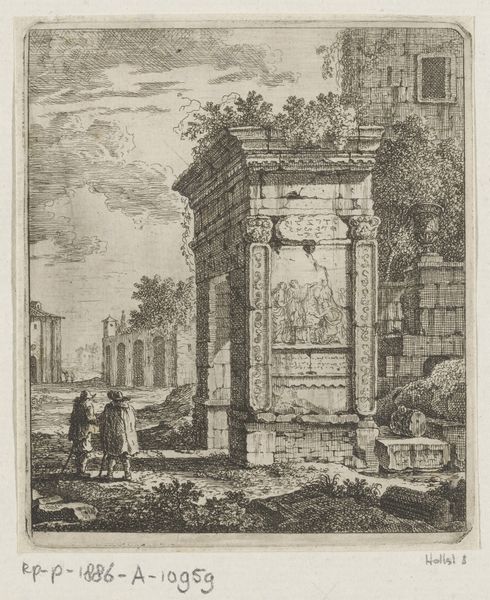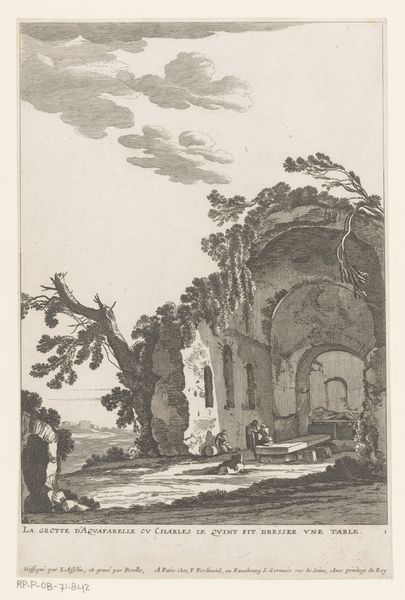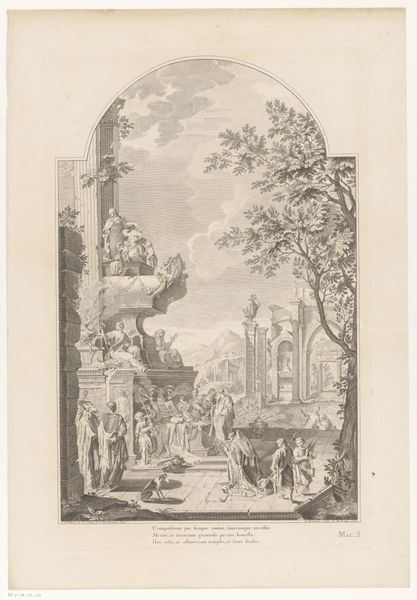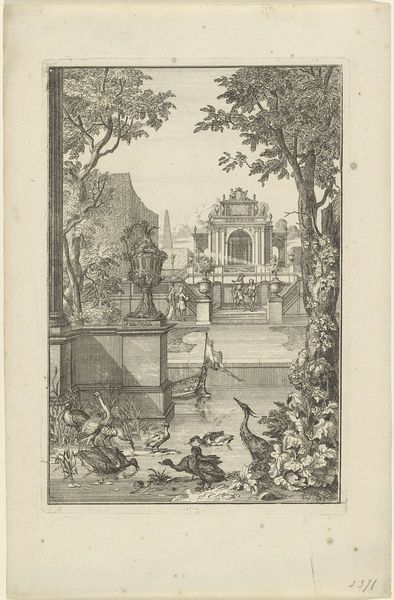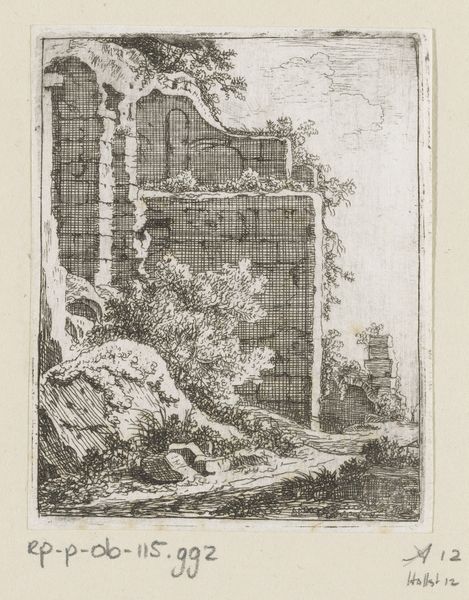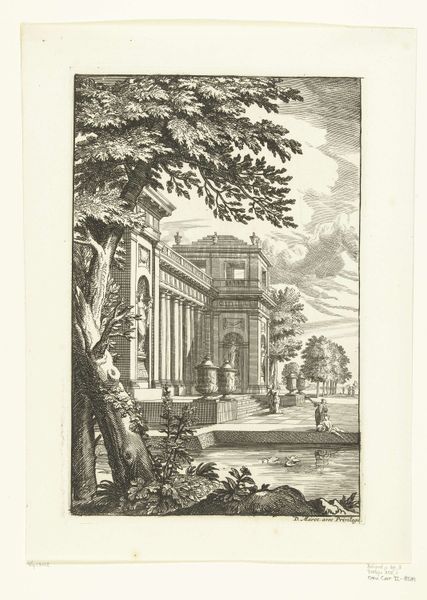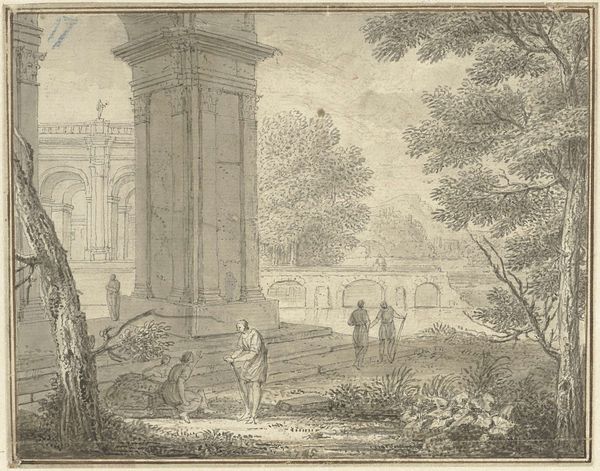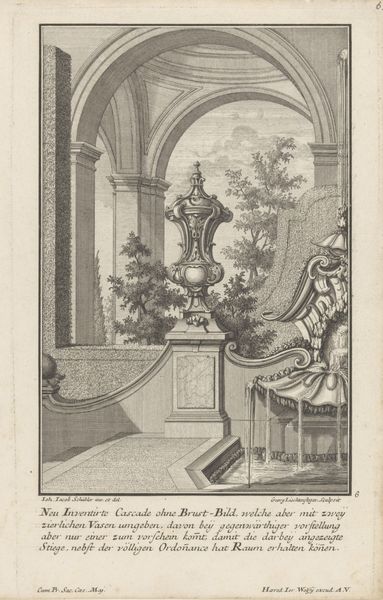
Arcadisch landschap met herders bij een beeldencolonnade 1713 - 1775
0:00
0:00
print, engraving
#
baroque
# print
#
landscape
#
classical-realism
#
figuration
#
engraving
Dimensions: height 135 mm, width 110 mm
Copyright: Rijks Museum: Open Domain
Louis Fabritius Dubourg created this scene of an Arcadian landscape with shepherds through the precise and skilled process of etching. The etcher covers a metal plate with a waxy, acid-resistant ground. Dubourg then used a needle to scratch away the ground, exposing the metal beneath. The plate was immersed in acid, which bit into the exposed lines, creating grooves. The depth of these lines dictated how much ink they would hold. The plate was then inked, the surface wiped clean, and the print taken. The character of the etched line, with its precision and clarity, determines the overall appearance of the image. The social context of the work is interesting. Etchings like this were relatively easy to reproduce and disseminate. They democratized images, making them accessible to a wider audience than unique paintings. The making of etchings like this involved not only artistic skill, but also labor and time. The contrast between the idyllic, leisurely scene and the meticulous, industrious process of its creation invites us to think about the relationship between art, labor, and society in the 18th century.
Comments
No comments
Be the first to comment and join the conversation on the ultimate creative platform.
